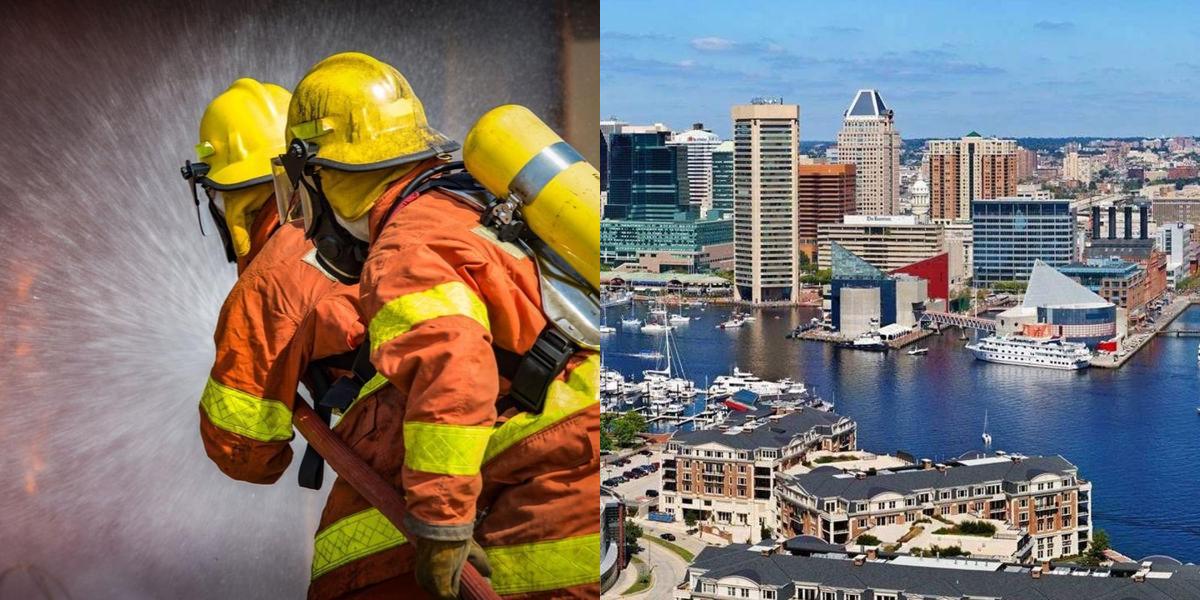How to Become a Firefighter in Maryland

Firefighters play a crucial role in protecting lives and property by responding to fires, accidents, and other emergency situations. They are responsible for extinguishing fires, providing medical assistance, and educating the public on fire safety. If you aspire to become a firefighter in Maryland, here are the key points you need to know:
Step 2: Research Fire Departments and Job Openings
To increase your chances of finding a job as a firefighter, it is important to research fire departments in your area and stay updated on any job openings. Many fire departments advertise job openings on their websites, social media platforms, or through local job boards. It is important to check these sources regularly and apply as soon as possible when a position becomes available.
Step 3: Prepare for the Interview
Once you have submitted your application, you may be invited for an interview. The interview is a critical step in the hiring process, as it allows the fire department to assess your suitability for the position. To prepare for the interview, it is important to research the fire department and familiarize yourself with their mission, values, and operations. You should also prepare answers to common interview questions and practice your responses to ensure that you can effectively communicate your skills, qualifications, and passion for firefighting.
Step 4: Pass the Physical Fitness Test
Firefighting is a physically demanding job, and most fire departments require candidates to pass a physical fitness test as part of the hiring process. The physical fitness test assesses your strength, endurance, and agility and may include tasks such as running, climbing stairs, dragging hoses, and carrying heavy equipment. It is important to prepare for the physical fitness test by engaging in regular exercise and conditioning your body to meet the demands of the job.
Step 5: Complete the Background Check and Medical Evaluation
Before being hired as a firefighter, you will need to undergo a background check and medical evaluation. The background check is conducted to ensure that you have a clean criminal record and are of good moral character. The medical evaluation assesses your physical and mental health to ensure that you are fit to perform the duties of a firefighter. It is important to be honest and transparent during these evaluations to avoid any issues during the hiring process.
Step 6: Attend the Fire Academy
If you are offered a job as a firefighter, you will likely be required to attend a fire academy. The fire academy provides additional training and education to prepare you for the specific requirements of the fire department you will be working for. The academy may include classroom instruction, hands-on training, and simulations to ensure that you are fully prepared to handle various emergency situations.
Career Paths and Opportunities after Becoming a Firefighter
Becoming a firefighter opens up a wide range of career paths and opportunities. While firefighting itself is a rewarding and fulfilling career, there are also many other avenues you can explore within the field. In this section, we will discuss some of the career paths and opportunities available to firefighters.
Fire Department Specializations
After gaining experience as a firefighter, you may choose to specialize in a specific area within the fire department. Some common specializations include:
- Fire Inspector: Fire inspectors are responsible for inspecting buildings and ensuring compliance with fire safety regulations. They identify potential fire hazards, enforce fire codes, and educate the public on fire safety measures.
- Arson Investigator: Arson investigators are responsible for determining the cause of fires and whether they were deliberately set. They collect evidence, interview witnesses, and work closely with law enforcement agencies during the investigation process.
- Hazardous Materials Specialist: Hazardous materials specialists are trained to handle and respond to incidents involving hazardous materials, such as chemical spills or leaks. They assess the situation, contain the materials, and ensure the safety of the public and the environment.
- Training Officer: Training officers are responsible for developing and delivering training programs to firefighters. They ensure that firefighters are continuously updated on the latest techniques, equipment, and safety protocols. They may also conduct drills and simulations to assess and improve the skills of firefighters.
Emergency Medical Services
Many firefighters are also trained as emergency medical technicians (EMTs) or paramedics. This additional training allows them to provide emergency medical services to individuals in need. Firefighters with EMT or paramedic certifications can provide pre-hospital care, including administering medication, performing CPR, and stabilizing patients before they are transported to the hospital. This dual role as a firefighter and EMT/paramedic allows firefighters to make a significant impact on the health and well-being of their communities.
Management and Leadership Roles
As you gain experience and expertise in the field of firefighting, you may have the opportunity to take on management and leadership roles within the fire department. These roles involve overseeing the operations of the department, managing personnel, and developing strategies to improve efficiency and effectiveness. Management and leadership roles may include positions such as battalion chief, deputy chief, or fire chief.
Teaching and Training
Many experienced firefighters choose to share their knowledge and expertise by becoming fire service instructors. Fire service instructors develop and deliver training programs to new recruits and current firefighters. They play a crucial role in ensuring that firefighters are well-trained and prepared to handle various emergency situations. Teaching and training opportunities may also be available at fire academies, technical schools, and community colleges.
How Much does a Firefighter Make?
The salary of a firefighter can vary based on factors such as location, experience, and the size of the fire department. According to the Bureau of Labor Statistics, the median annual wage for firefighters was $50,850 in May 2020. The lowest 10 percent earned less than $25,850, while the highest 10 percent earned more than $94,720.
For entry-level firefighters, the starting salary can be lower than the median wage. However, as they gain experience and move up the ranks, their salary can increase significantly. It's important to note that these figures are just averages, and the actual salary can vary depending on various factors.
Final Thoughts
Becoming a firefighter is a challenging but rewarding career choice. It requires dedication, physical fitness, and a passion for serving the community. By obtaining your firefighter certification and following the necessary steps to secure a job as a firefighter, you can embark on a fulfilling career that allows you to make a difference in the lives of others. Whether you choose to specialize in a specific area, pursue opportunities in emergency medical services, or take on management and leadership roles, the field of firefighting offers a wide range of career paths and opportunities.
If you're exploring various professional paths, Dreambound has in-depth guides to help assist you. Explore a few of these resources below.





